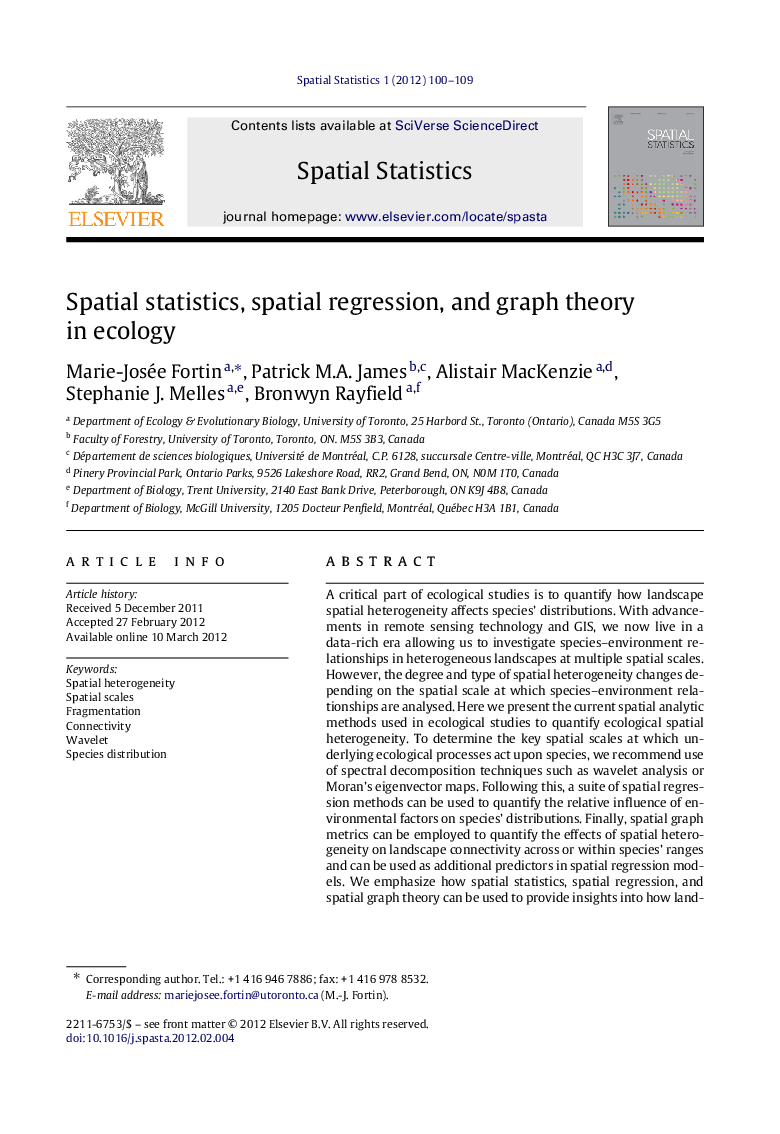| کد مقاله | کد نشریه | سال انتشار | مقاله انگلیسی | نسخه تمام متن |
|---|---|---|---|---|
| 1064590 | 1485798 | 2012 | 10 صفحه PDF | دانلود رایگان |

A critical part of ecological studies is to quantify how landscape spatial heterogeneity affects species’ distributions. With advancements in remote sensing technology and GIS, we now live in a data-rich era allowing us to investigate species–environment relationships in heterogeneous landscapes at multiple spatial scales. However, the degree and type of spatial heterogeneity changes depending on the spatial scale at which species–environment relationships are analysed. Here we present the current spatial analytic methods used in ecological studies to quantify ecological spatial heterogeneity. To determine the key spatial scales at which underlying ecological processes act upon species, we recommend use of spectral decomposition techniques such as wavelet analysis or Moran’s eigenvector maps. Following this, a suite of spatial regression methods can be used to quantify the relative influence of environmental factors on species’ distributions. Finally, spatial graph metrics can be employed to quantify the effects of spatial heterogeneity on landscape connectivity across or within species’ ranges and can be used as additional predictors in spatial regression models. We emphasize how spatial statistics, spatial regression, and spatial graph theory can be used to provide insights into how landscape spatial complexity influences species distributions and to better understand species response to global change.
Journal: Spatial Statistics - Volume 1, May 2012, Pages 100–109